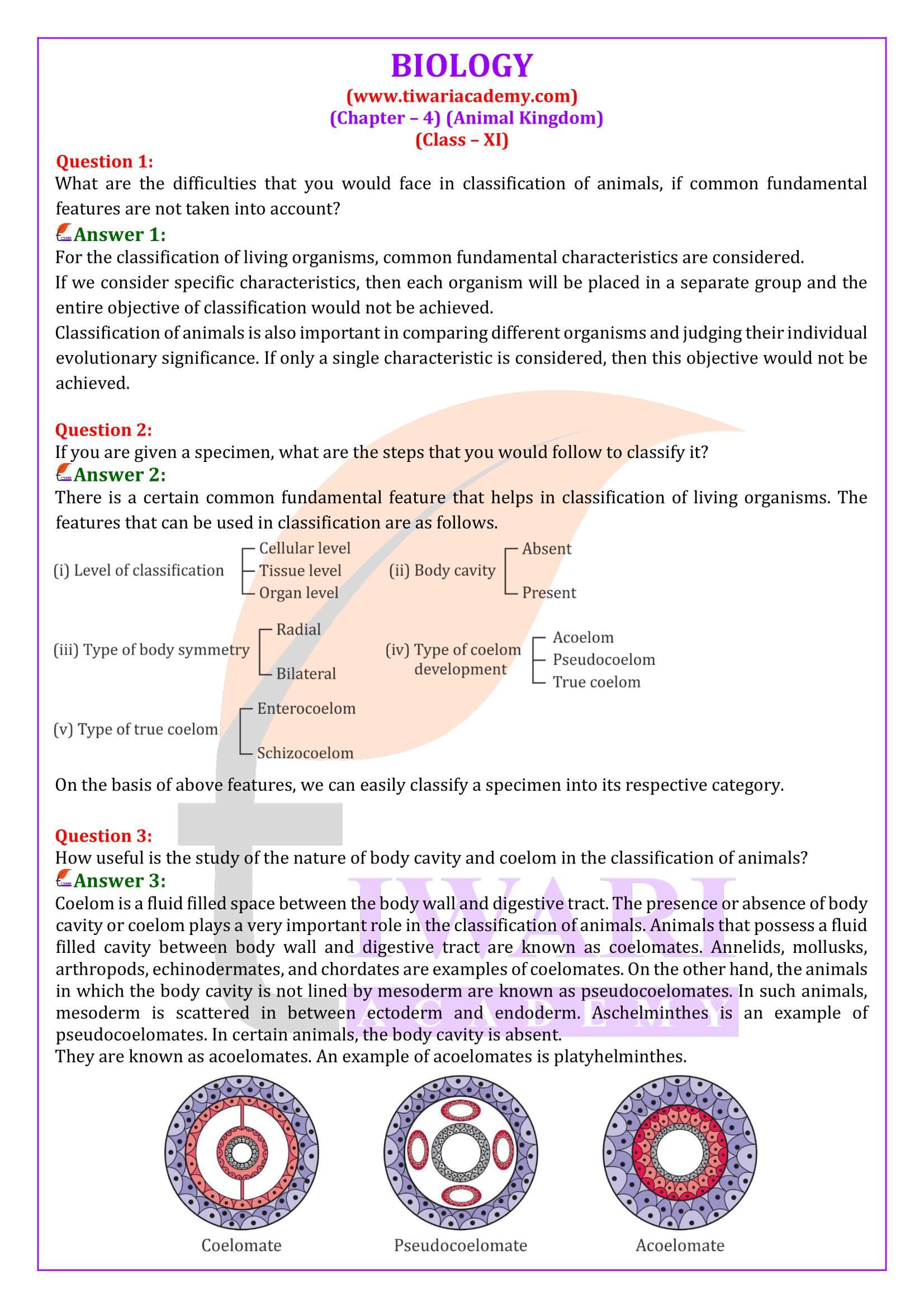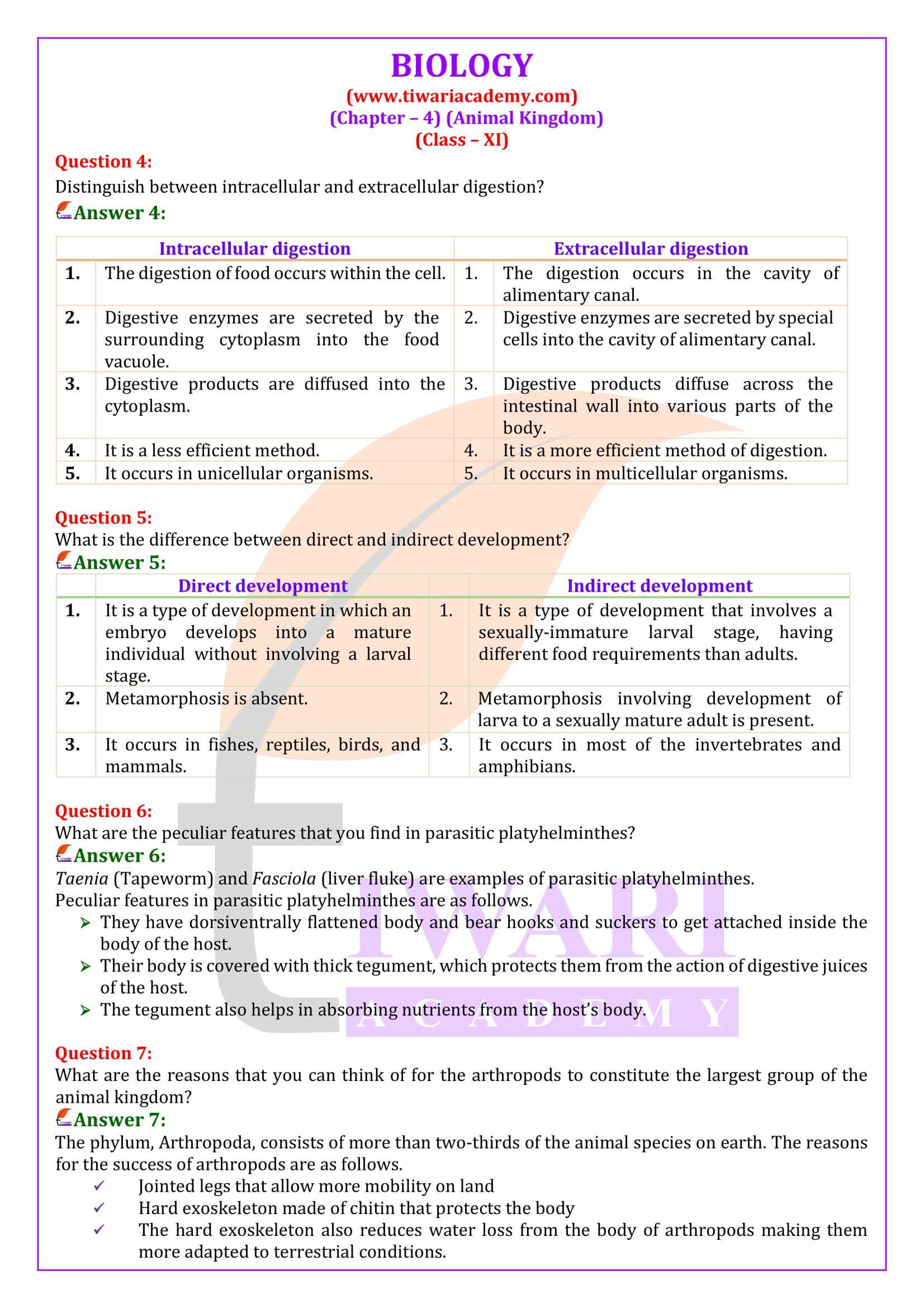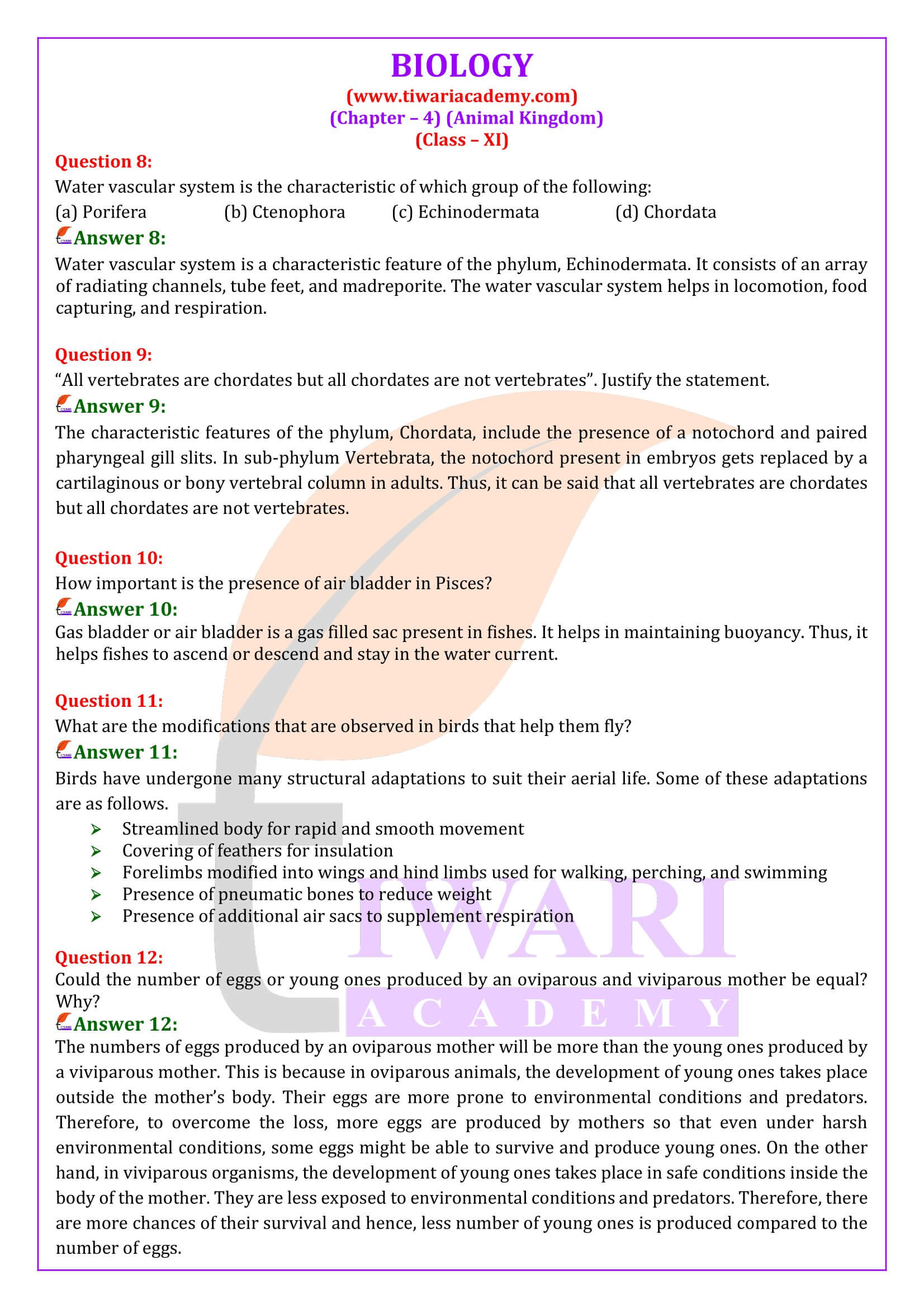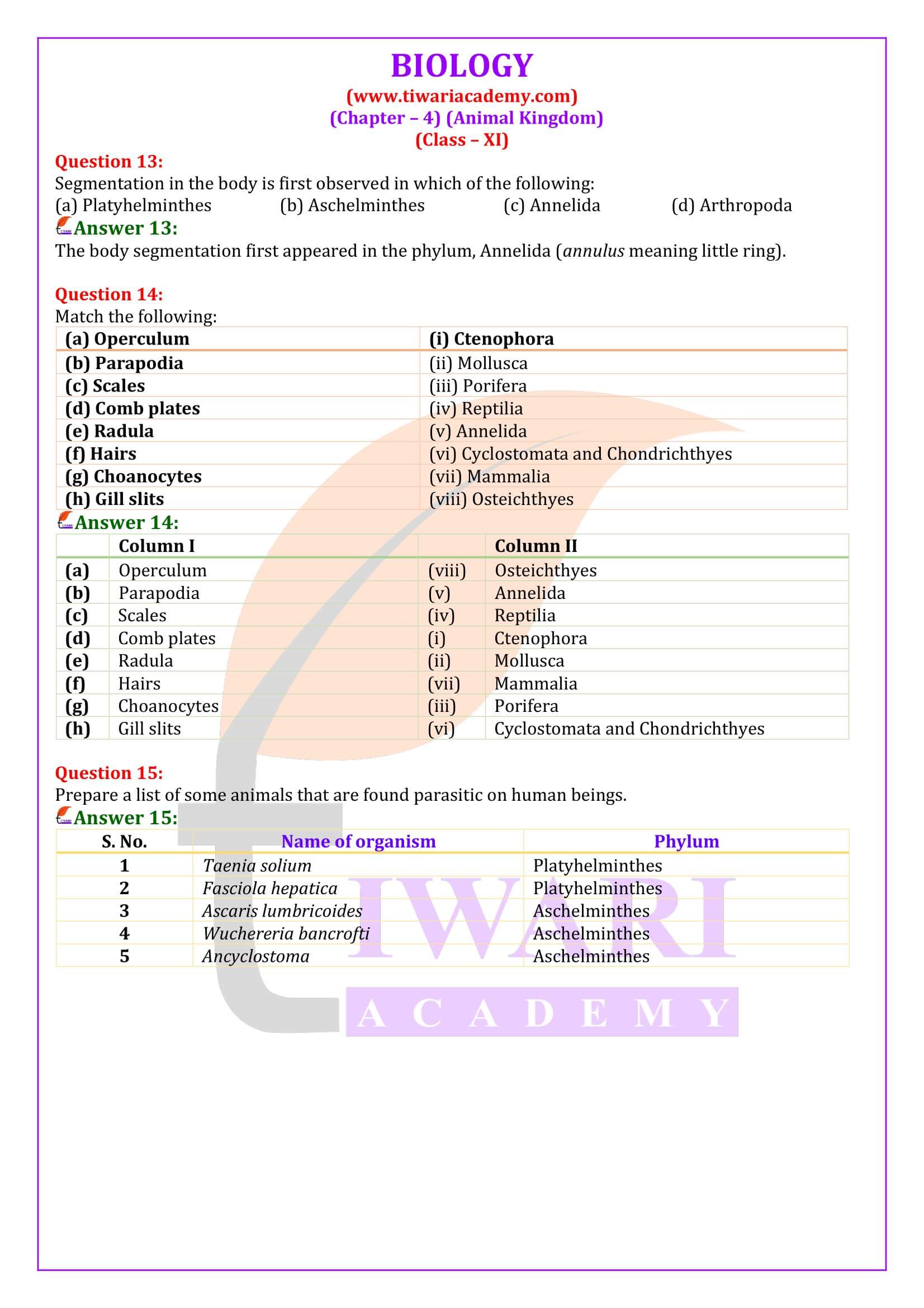NCERT Solutions for Class 11 Biology Chapter 4 Animal Kingdom in Hindi and English Medium to Study online as well as available to download in PDF format free for new academic session 2024-25. Download NCERT Solutions based on latest and updated NCERT Books for CBSE.
NCERT Solutions for Class 11 Biology Chapter 4
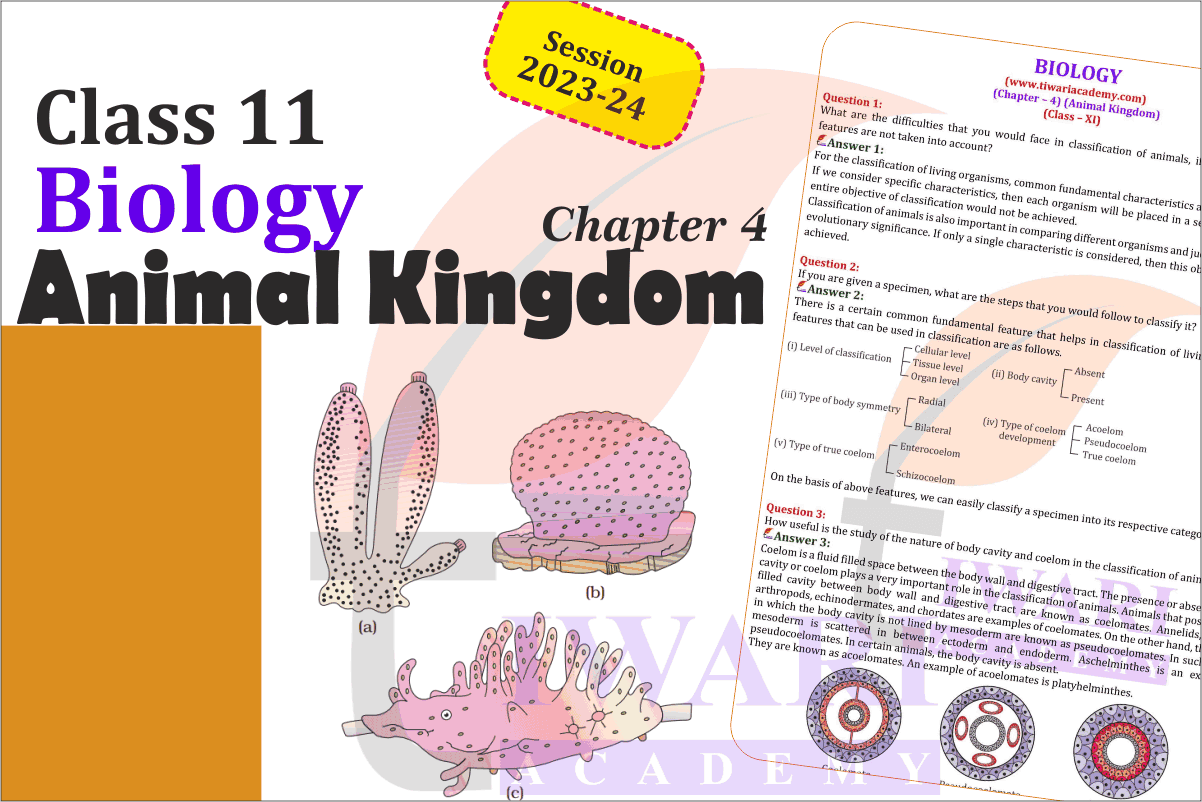
| Class: 11 | Biology |
| Chapter 4: | Animal Kingdom |
| Content: | Textbook Question Answers |
| Mode of Content: | Images and PDF |
| Academic Session: | Year 2024-25 |
| Medium: | Hindi and English Medium |
Class 11 Biology Chapter 4 Solutions in English
NCERT Solutions for Class 11 Biology Chapter 4 is given below to download in PDF format free for new academic session 2024-25. Download Offline Apps based on updated NCERT Solutions following the latest CBSE Syllabus. NCERT Books are also given to download in PDF form for class 11 all subjects. Ask your questions via Discussion Forum to discuss with others.
Important Terms related to Chapter 4
Bilateral symmetry: Only one plane can divide the organism into two identical left and right halves e.g., Annelids and Arthropods.
1. Coelom (Body cavity which is lined by mesoderm)
2. Coelomates: Have coelom e.g., Annelids, Arthropods, molluscs, Echinoderms, Chordates etc.
3. Pseudocoelomates: No true coelem as mesoderm is present in scattered pouches between ectoderm and endoderm. e.,g., Aschelminthes.
4. Acoelomates: Body cavity is absent e.g., Platyhelminthes.
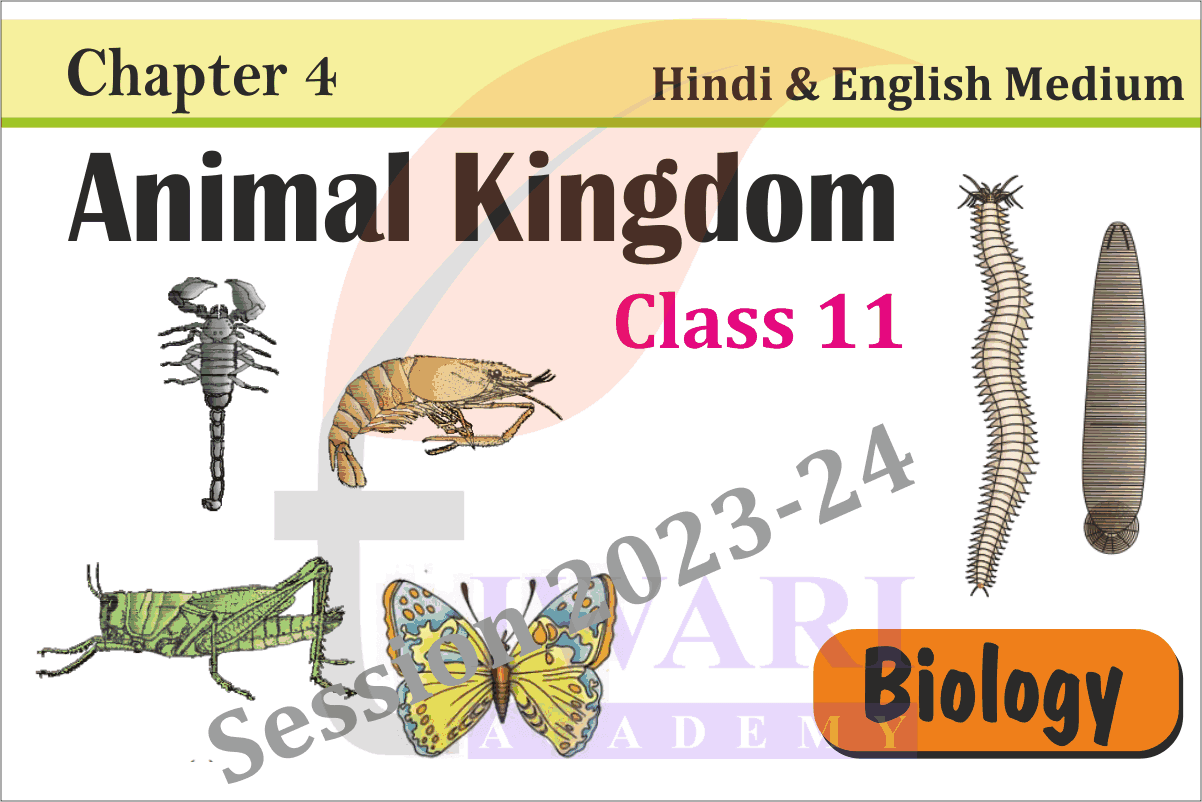
Important Terms on Animal Kingdom
1. Asymmetrical: Cannot be divided into equal halves through median plane e.g., Sponges.
Radial symmetry: Any plane passing through central axis can divide organism into identical halves. e.g., coelentrates,Ctenophores and echinoderms.
2. Metamerism: If body is externally and internally divided into segments (metameres) with serial repetition of atleast some organs, then phenomenon is called metamerism e.g., Earthworm.
3. Pseudometamerism: Found in tapeworm. The proglottids (segments of tapeworm) budded off from neck not emryonic in origin.
4. Notochord: Rod-like structure formed during embryonic development on t he dorsal side. It is mesodermally derived e.g., Chordates. Non-chordates do not have notochord .e.g., porifera to echinoderms.
PHYLUM CTENOPHORA
1. Also called as sea walnuts or comb jellies.
2. Are exclusively marine, radially symmetrical.
3. Have tissue level organisation, are diploblastic.
4. Digestion both extra and intracellular.
5. Body has eight external rows of ciliated comb plates for locomotion.
6. Show Bioluminescence (Property of living organisms to emit light).
7. Hermaphrodite (sexes are not separate).
8. Only sexual reproduction occurs. Exernal fertilization. Indirect development. e.g., Ctenoplana, Pleurobrachia.
Phyum Annelida
1. Are aquatic or terrestrial, free-living or parasitic.
2. Are bilaterally symmetrical, triploblastic, organ-system level of organisation and metamerically segmented body.
3. Are coelomate animals.
4. Have longitudinal and circular muscles for locomation.
5. Have closed circulatory system.
6. Nereis (dioecious and aquatic annelid) has lateral appendages called parapodia for swimming.
7. Have nephridia for osmoregulation and excretion.
8. Neural system consists of paired gangila connected by lateral nerves to a double ventral nerve cord.
9. Reproduction is sexual. e.g., Earthworm (Pheretima) and Leech (Hirudinaria) which are hermaph rodites (i.e., monoecious).
Important Questions on 11th Biology Chapter 4
What are the difficulties that you would face in classification of animals, if common fundamental features are not taken into account?
For the classification of living organisms, common fundamental characteristics are considered. If we consider specific characteristics, then each organism will be placed in a separate group and the entire objective of classification would not be achieved. Classification of animals is also important in comparing different organisms and judging their individual evolutionary significance. If only a single characteristic is considered, then this objective would not be achieved.
How useful is the study of the nature of body cavity and coelom in the classification of animals?
Coelom is a fluid filled space between the body wall and digestive tract. The presence or absence of body cavity or coelom plays a very important role in the classification of animals. Animals that possess a fluid filled cavity between body wall and digestive tract are known as coelomates. Annelids, mollusks, arthropods, echinodermates, and chordates are examples of coelomates. On the other hand, the animals in which the body cavity is not lined by mesoderm are known as pseudocoelomates. In such animals, mesoderm is scattered in between ectoderm and endoderm. Aschelminthes is an example of pseudocoelomates. In certain animals, the body cavity is absent. They are known as acoelomates. An example of acoelomates is platyhelminthes.
What are the peculiar features that you find in parasitic platyhelminthes?
Taenia (Tapeworm) and Fasciola (liver fluke) are examples of parasitic platyhelminthes. Peculiar features in parasitic platyhelminthes are as follows. They have dorsiventrally flattened body and bear hooks and suckers to get attached inside the body of the host. Their body is covered with thick tegument, which protects them from the action of digestive juices of the host. The tegument also helps in absorbing nutrients from the host’s body.
What are the reasons that you can think of for the arthropods to constitute the largest group of the animal kingdom?
The phylum, Arthropoda, consists of more than two-thirds of the animal species on earth. The reasons for the success of arthropods are as follows. Jointed legs that allow more mobility on land Hard exoskeleton made of chitin that protects the body The hard exoskeleton also reduces water loss from the body of arthropods making them more adapted to terrestrial conditions.
“All vertebrates are chordates but all chordates are not vertebrates”. Justify the statement.
The characteristic features of the phylum, Chordata, include the presence of a notochord and paired pharyngeal gill slits. In sub-phylum Vertebrata, the notochord present in embryos gets replaced by a cartilaginous or bony vertebral column in adults. Thus, it can be said that all vertebrates are chordates but all chordates are not vertebrates.
How important is the presence of air bladder in Pisces?
Gas bladder or air bladder is a gas filled sac present in fishes. It helps in maintaining buoyancy. Thus, it helps fishes to ascend or descend and stay in the water current.
What are the modifications that are observed in birds that help them fly?
Birds have undergone many structural adaptations to suit their aerial life. Some of these adaptations are as follows. Streamlined body for rapid and smooth movement Covering of feathers for insulation Forelimbs modified into wings and hind limbs used for walking, perching, and swimming Presence of pneumatic bones to reduce weight Presence of additional air sacs to supplement respiration
Could the number of eggs or young ones produced by an oviparous and viviparous mother be equal? Why?
The numbers of eggs produced by an oviparous mother will be more than the young ones produced by a viviparous mother. This is because in oviparous animals, the development of young ones takes place outside the mother’s body. Their eggs are more prone to environmental conditions and predators. Therefore, to overcome the loss, more eggs are produced by mothers so that even under harsh environmental conditions, some eggs might be able to survive and produce young ones. On the other hand, in viviparous organisms, the development of young ones takes place in safe conditions inside the body of the mother. They are less exposed to environmental conditions and predators. Therefore, there are more chances of their survival and hence, less number of young ones is produced compared to the number of eggs.
NCERT Solutions for Class 11 Biology Chapter 4 Animal Kingdom.
Download NCERT Solutions for Class 11 Biology Chapter 4 Animal Kingdom in PDF form free. Downloaded PDF can be use as offline contents. View online options are given to use these contents without downloading. This page contains all the end exercises questions answers of Class 11 Biology Chapter 4 Animal Kingdom.
